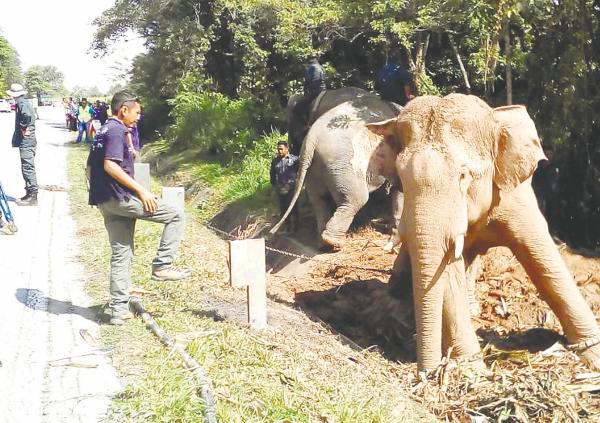PETALING JAYA: An academic has called on the government to ensure there is no further human encroachment of land populated by elephants in the country and to find ways where the pachyderms and humans can coexist peacefully.
Universiti Putra Malaysia Faculty of Forestry and Environment senior lecturer Dr Mohd Yusoff Ishak said elephants are forced out of their natural habitats due to habitat loss driven by the expanding demand for housing, infrastructure and agriculture.
“Conflicts increase as human population grows. Land is transformed and habitats are degraded. This intensifies competition for limited resources between humans and elephants.
“Elephants need extensive spaces for food and roam up to 50km a day. When they are confined to smaller habitats, they may forage in human-populated areas, leading to crop damage and safety risks.”
The Department of Wildlife and National Parks said a total of 3,929 complaints of human-elephant conflicts were recorded between 2019 and 2023, while there were 655 complaints nationwide up to June this year.
Mohd Yusoff said farms or newly established plantations may lie within the roaming or migration paths of elephants, and can contribute to conflicts.
He said although the exact figure for the amount of land infringed upon or taken over by humans is unavailable, those areas were once freely roamed by wildlife before human expansion.
At the beginning of the 20th century, more than 100,000 Asian elephants may have existed.
However, Ecological Association of Malaysia president Prof Dr Ahmad Ismail said the current elephant population in Peninsular Malaysia is estimated at only 1,220 to 1,680.
He said elephants are a protected species and play a crucial role in the forest ecosystem due to their unique behaviour and significant impact on their surroundings.
“As large animals that travel extensively through forests, their movement often results in the trampling of vegetation, not because they are destructive but because they consume large amounts of food and require vast spaces to move.
“The elephant population is now declining and their shrinking habitats will lead to more conflicts. Hence, it’s crucial to protect them from unchecked development. Stop illegal poaching and end the trafficking of elephant parts.”
Ahmad said despite existing laws protecting wildlife, challenges remain, especially in managing conflicts across vast areas where humans have encroached.
He said elephants follow specific migratory paths and often return to the same areas, leading to repeated conflicts and financial losses amounting to millions of ringgit each year.
“Understanding elephant behaviour is crucial as they are social animals with strong family bonds and sophisticated communication systems, particularly when responding to threats,” he said.
Universiti Putra Malaysia Wildlife Management senior lecturer Dr Tengku Rinalfi Putra Tengku Azizan said wild elephants are inherently untamed and can be unpredictable in their behaviour.
He said their first line of defence is often vocalisation, which is a key warning sign that they are agitated or on high alert.
“Aggression occurs mainly due to the experience of the elephants themselves. Elephant calves are known to be naive and may approach humans.
“However, adult wild elephants have developed a trigger mechanism that associates humans with a threat and this causes them to react defensively.”
Tengku Rinalfi Putra said the chances of encountering elephants are higher during the flowering or fruiting season since these periods coincide with a bountiful supply of food sources that attract elephants.
“During these seasons, elephants are more active and likely to move into areas where humans exist, making encounters more frequent,” he said.









